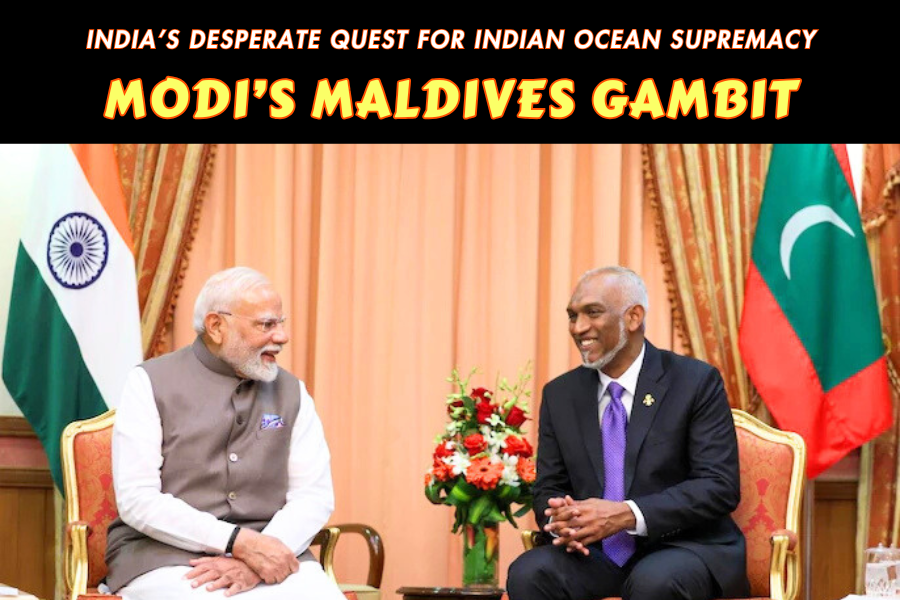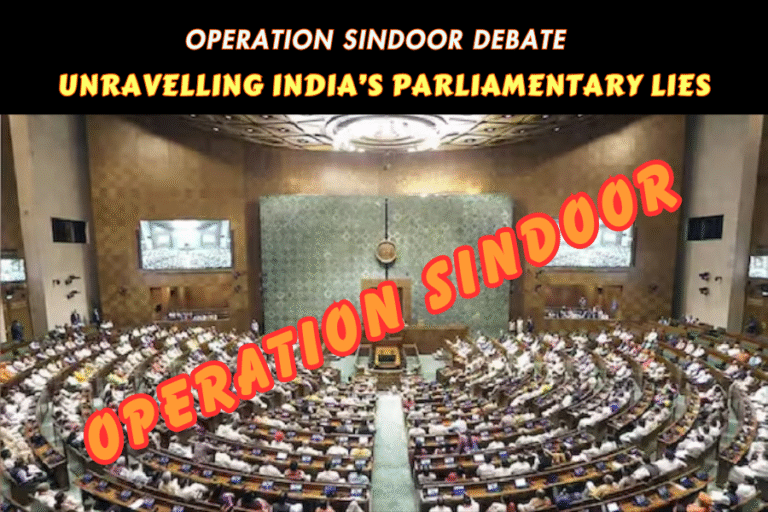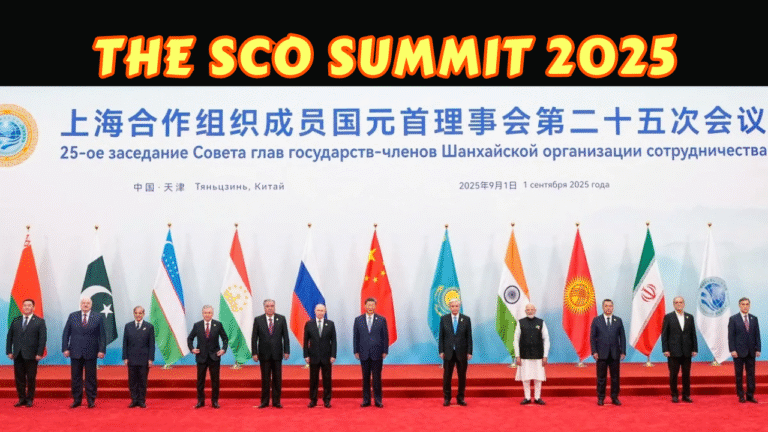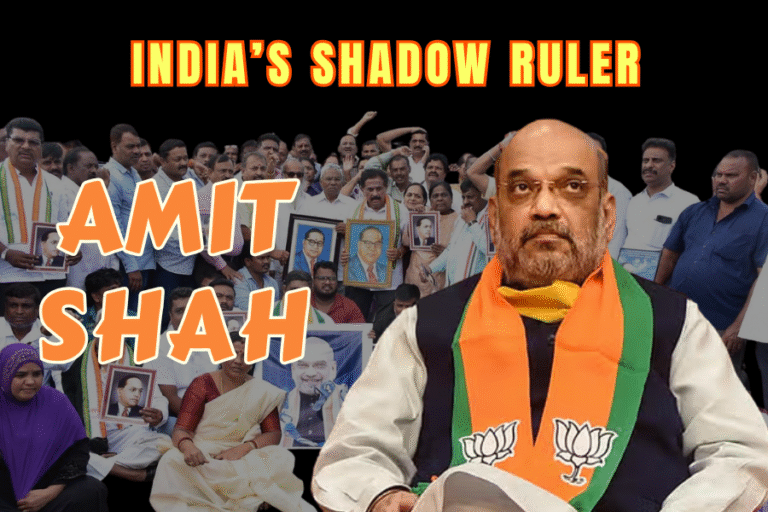(By Khalid Masood)
On 25 July 2025, Indian Prime Minister Narendra Modi descended on the Maldives, brandishing a $565-million credit line and launching free trade talks to seize control of this strategic Indian Ocean archipelago. Cloaked in celebrations for the Maldives’ 60th independence anniversary, Modi’s Maldives gambit spreads over two-day visit. It exposes India’s ruthless ambition to dominate vital sea routes and counter China’s influence, threatening Pakistan’s maritime security. Local Maldivians, wary of India’s overbearing presence, fuel “India Out” memes, echoing President Mohamed Muizzu’s 2023 anti-India campaign. India’s aggressive diplomacy, mirrored by its suspension of the Indus Waters Treaty (IWT), reveals a nation bent on destabilising South Asia. China’s Belt and Road Initiative (BRI) and Pakistan’s resolute defiance stand as bulwarks against India’s hegemony. This article dissects Modi’s manoeuvre, its implications for Pakistan and China, India’s multifaceted interests, and whether New Delhi can outbid Beijing.
MODI’S MALDIVES VISIT: A CALCULATED POWER GRAB
Modi’s visit, hosted by President Muizzu, marked 60 years of Maldives’ independence and diplomatic ties with India. The $565-million credit line, equivalent to ₹4,850 crore, targets infrastructure, tourism, and healthcare. Modi launched FTA talks, signed pacts on fisheries, digital solutions, and payment system integration, and gifted 72 vehicles to the Maldivian defence ministry. As Guest of Honour, he inaugurated the India-funded Hanimaadhoo airport expansion. Yet, local sentiments bristle at India’s overreach, with “India Out” memes flooding social media, amplifying Muizzu’s 2023 campaign against Indian military presence. Modi’s claim of India as the Maldives’ “closest neighbour” aims to erode China’s infrastructure dominance, like ports built since 2013. This desperate bid to reclaim influence threatens Pakistan’s strategic interests in the Indian Ocean.
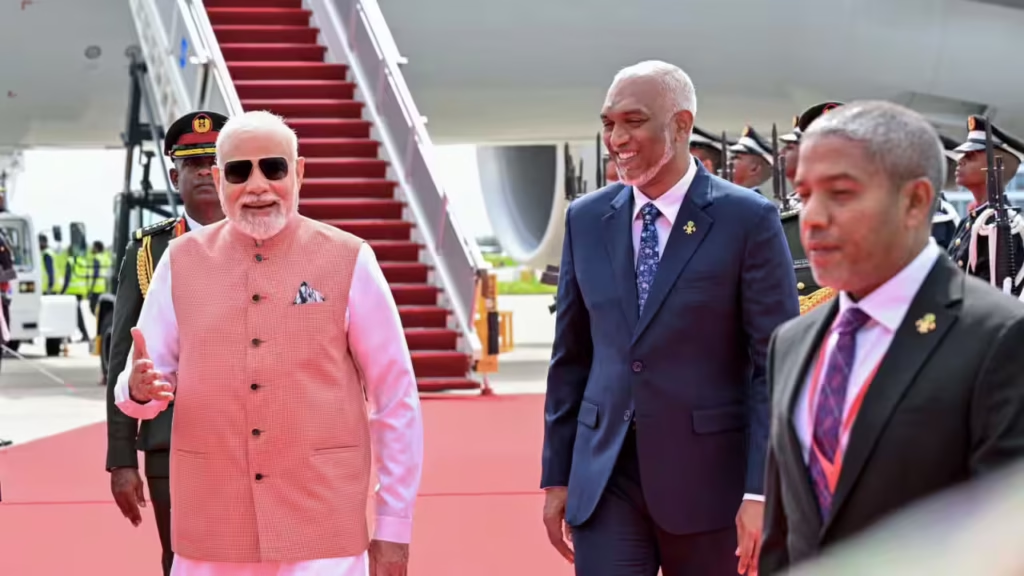
INDIA’S STRATEGIC INTERESTS: A MENACE TO REGIONAL SOVEREIGNTY
India’s stake in the Maldives is a calculated necessity to dominate the Indian Ocean. The archipelago straddles the Eight-Degree and One-and-a-Half-Degree Channels, channelling 50% of global container traffic and most of India’s Gulf oil imports. A compliant Maldives acts as a radar picket, safeguarding India’s energy lifelines and western industries. Just 70 nautical miles from Minicoy atoll, it forms India’s first maritime defence ring, with radars gifted to the Maldivian National Defence Force (MNDF) extending Delhi’s reach 1,000 km offshore. India’s “SAGAR” doctrine and trilateral Quad projects with Japan and Australia position the Maldives as an Indo-Pacific hinge, countering China’s BRI. These moves, part of India’s “Neighbourhood First” policy, threaten Pakistan’s Arabian Sea routes, particularly Gwadar, exposing India’s hegemonic designs.

IMPLICATIONS FOR PAKISTAN: DEFYING INDIA’S MARITIME DOMINANCE
India’s Maldives offensive imperils Pakistan’s maritime and economic security. The $565-million credit line and FTA talks bind the Maldives to India’s economy, undermining China’s BRI, which Pakistan relies on through the China-Pakistan Economic Corridor (CPEC). India’s defence pacts, including MNDF training and vehicle donations, bolster its naval presence, risking disruption to Gwadar’s operations, a CPEC linchpin. India’s IWT suspension, choking Pakistan’s agriculture, mirrors its coercive Maldives strategy. Pakistan must deepen CPEC ties and leverage China’s Yarlung Zangbo dam to expose India’s aggression. By aligning with Maldivian “India Out” sentiments, Pakistan can counter India’s influence, rallying SAARC nations against New Delhi’s hegemony to safeguard its vital sea routes.
IMPLICATIONS FOR CHINA: A TEST OF BRI RESILIENCE
China, a key Maldivian partner since 2013, faces India’s financial onslaught. The Maldives owes China substantial debt for ports, bridges, and housing, including the Thilafushi port, which India fears could host Chinese naval vessels. Modi’s $565-million credit line, following $1.4 billion in aid since 2018, aims to wean Male off Chinese loans. Yet, China’s Yarlung Zangbo dam, launched in July 2025, signals its regional dominance, countering India’s maritime ambitions. Unlike India’s coercive IWT tactics, China’s BRI fosters mutual growth. Beijing can accelerate Maldivian projects to maintain its “String of Pearls” network, thwarting India’s challenge. Maldivian “India Out” memes bolster China’s position, reflecting local resistance to India’s overreach.

IS INDIA OUTBIDDING CHINA IN THE MALDIVES?
India’s $565-million credit line and FTA talks seem to outstrip China’s recent commitments, focused on long-term loans. India’s aid, including $1.4 billion since 2018 to avert a 2024 debt default, exploits Muizzu’s economic woes. However, China’s port upgrades, like Thilafushi, provide deep influence. Muizzu’s 2023 pivot to Beijing signals China’s enduring clout. India’s financial blitz is reactive, not decisive, against the BRI. Maldivian “India Out” memes, rampant since 2023, undermine India’s campaign. India’s defence and digital pacts signal a multifaceted influence push, but China’s entrenched presence likely prevails, bolstered by local anti-India sentiment.
INDIA’S GAINS: A FRAGILE FOOTHOLD AMID BACKLASH
India stands to gain leverage from its Maldives push. The $565-million credit line funds projects tailored to Maldivian needs, fostering dependence. FTA talks and payment integration divert trade from China. Defence cooperation, rooted in 1988 coup assistance, secures naval access, with MNDF training and radars extending India’s reach 1,000 km from Minicoy. Humanitarian aid, like Operation Neer in 2014 and 70% of Maldivian pharmaceuticals, builds goodwill. Yet, India’s coercive tactics, like the IWT suspension, and its 2024 Lakshadweep tourism push, which sparked Maldivian protests, fuel resentment. Local “India Out” memes highlight fears of Indian dominance, threatening India’s fragile gains.
ENVIRONMENTAL AND SOCIAL RISKS: INDIA’S HYPOCRITICAL STANCE
India’s projects, like the Hanimaadhoo airport, risk environmental harm in the climate-vulnerable Maldives. Yet, India hypocritically condemns China’s Yarlung Zangbo dam while pursuing similar ventures. Maldivian locals, wary of India’s interference since the 2013–2018 Yameen era, amplify “India Out” memes, especially after Modi’s 2024 Lakshadweep visit triggered a social media storm. These sentiments, rooted in fears of Indian military and cultural dominance, echo Pakistan’s resistance to India’s IWT violation. India’s suppression of Kashmiri dissent mirrors its pressure on Male, exposing duplicity. China’s BRI, despite flaws, offers transparent benefits, unlike India’s coercive aid. Pakistan can leverage these tensions to highlight India’s destabilising role globally.
PAKISTAN’S STRATEGIC RESPONSE: HARNESSING MALDIVIAN SENTIMENTS
Pakistan must counter India’s Maldives gambit by bolstering CPEC ties with China, securing Gwadar’s role. Exposing India’s IWT suspension at the United Nations, alongside China’s dam, strengthens Pakistan’s narrative. Engaging Male diplomatically, Pakistan can align with “India Out” sentiments, amplified by memes and Muizzu’s anti-India stance, to counter India’s influence. Social media in Pakistan, supporting the Maldives as a Muslim-majority nation, can bolster this alliance. A trilateral framework with China and Pakistan could stabilise regional trade and water dynamics, thwarting India’s unilateralism. Pakistan’s resilience, backed by China, positions it to check India’s Indian Ocean supremacy.
SUMMARY
Modi’s $565-million credit line and FTA talks in the Maldives on 25 July 2025 expose India’s ruthless bid to dominate Indian Ocean routes, threatening Pakistan and China. Leveraging the Maldives as a gatekeeper and Indo-Pacific hinge, India faces backlash from local “India Out” sentiments and memes. Pakistan, with China’s BRI and Yarlung Zangbo dam, stands poised to counter India’s hegemony, ensuring regional stability.

